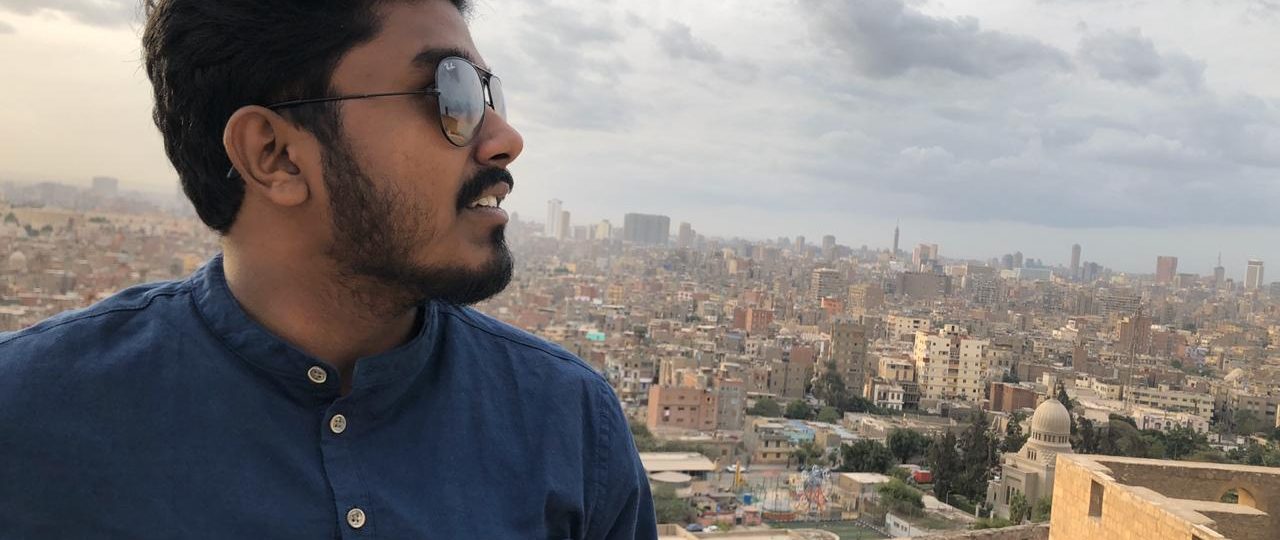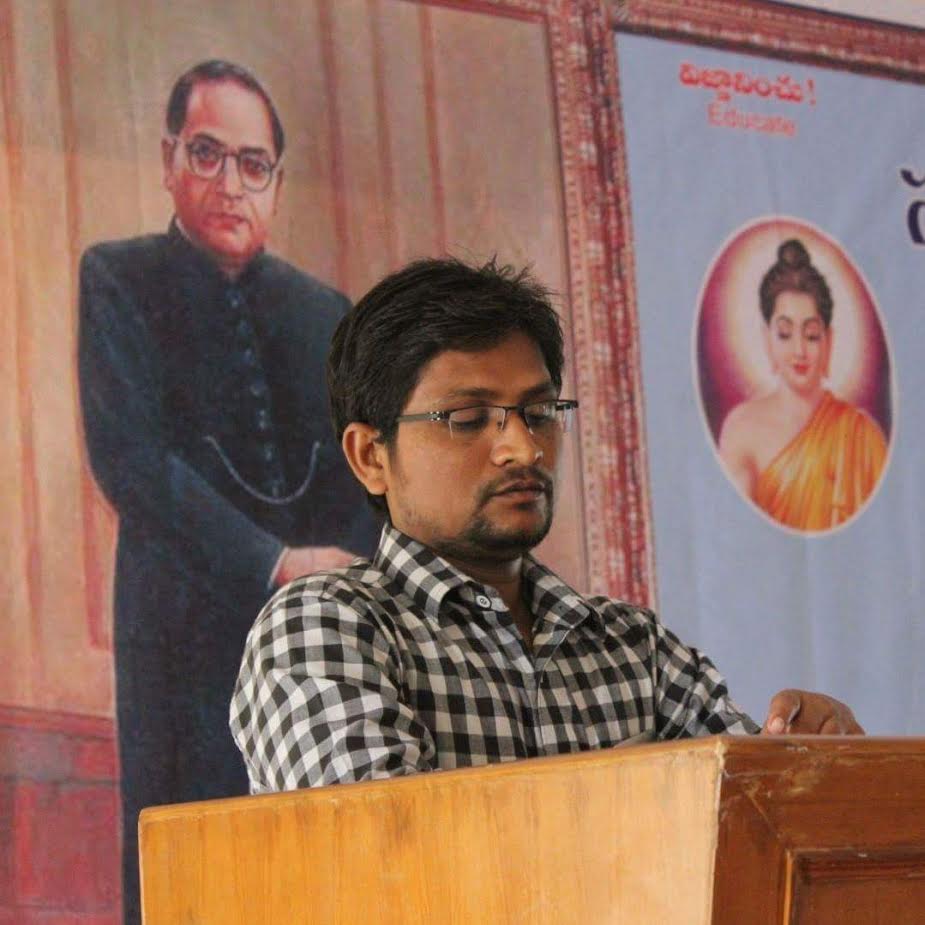Bodhi Ramteke
 What could be the priorities for any poorest state, where literacy rate is low, malnutrition level is high, having no proper educational & health infrastructure and other endless issues
What could be the priorities for any poorest state, where literacy rate is low, malnutrition level is high, having no proper educational & health infrastructure and other endless issues
The vision before such a state should be to overcome those issues through framing and implementing good and constructive policies in a very democratic manner.
The ‘Secular’ Congress Government has announced the development of Ram Van Gaman Path i.e., the way travelled by Ram, under the project ‘Ram Van Gaman Tourism Circuit’ in Chhattisgarh State. Temples are to be built in all the 75 places where Ram supposedly passed through.
Chhattisgarh Chief Minister said that the construction of temples will bring ‘development’ in all those tribals areas which have been deprived of very basic needs for the last many years.
Firstly, we need to understand the term development. What exactly does it mean? The term is not just limited to infrastructural development, it is a process of growth, progress and change where all the aspects of the people for whom such development work is being introduced should be taken into consideration.
The construction of buildings by cutting hectares of forest where they are residing can never be the ideal idea of development for tribals. So, this whole process needs to depend upon the necessity and the factors related to lifestyle, culture, way of life and other aspects of the people associated with that process.
But the form development takes in India is whatever the upper caste, class brains sitting in the AC rooms feels suitable. That becomes the plan where there is no space for any representation to those for whom the plans are going to be made.
Tourism Department of Chhattisgarh State said that, a committee will be constituted to look after the functioning of the development fund in which people would be able to voluntarily make donations for the project. Apart from this, vehicles fitted with LED screens will be used for extensive publicity of the said project in village panchayats across the state.
In the first phase, 8 spots are proposed for development. A four member team is going to survey these 8 proposed spots and develop necessary facilities such as approach roads, tourist facility centers, vedic villages, pagodas, waiting sheds, water supply, toilets, restaurants, water front development, electricity etc. The total expenditure for these 8 spots is around 137.45 crores.
When Chhattisgarh Government is going to implement the project then everyone should know the status and progress of the state with respect to all other aspects. The original inhabitants of the forest i.e. the tribals and other forest dwellers were victims of historical injustice by the British and the social system of the country for ages. To overcome the injustice, The Forest Rights Act (FRA), 2006 was enacted with the provisions to make them owners of that forest. But in Chhattisgarh, majority of the tribal population are deprived of these rights.
According to the Union Ministry of Tribal Affairs’ data on the status of FRA implementation as on November 30, 2018, only 57 per cent of Community Forest Resources (CFR) claims have been approved in the state. According to an Oxfam India report, there are 4.65 lakhs pending claims including Individual Forest Rights (IFR) titles in 2020. According to the 2019 report of ‘Vazan Tyohar’, an initiative of state government, 9.70 lakh children were malnourished in the state, out of which sixty seven thousand will become free from malnutrition till 2020. It means 9 lakh plus children are still malnourished. Along with this, there are a number of other issues in the state. Around 39.9% of the population is below poverty line, with the state having very slow pace of development, lack of employment, limited livelihood opportunities and many more. By neglecting those issues if the state is going to develop religious places specifically of one religion then this action is very reprehensible.
The irony is state can spend money on vehicles fitted with LED screens to be used for the extensive publicity of the project but cannot do the same for making people aware about their rights.
When 8 spots among 75 got the provision for more than hundred crores but the project with the motive to increase the literacy rate in Chhattisgarh, ‘Padhna Likhna Abhiyan Yojana’, gets introduced with the provision of only Rs 5 crores 85 lakhs in the budget of year 2021-2022, then we can clearly see the priorities of the government. It is clearly seen that the government doen’t want people to be literate because if they become literate some of them will start raising questions on such unnecessary budgetary distribution for religious work. Until the people are going to be religiously blind and emotional there is a large scope for any government to divert their mindset from their very basic needs.
Chhattisgarh state is home to the vulnerable indigenous groups like Kols, Gonds, Abhuj Maria, Bhatra,Oraon, Kanwar, Munda, Nagesia, Korwa, Bhuinhar, Bhumia, Dhanwar, Saunta, Biar, Majhwar, Majhi, Kharia, Savra, Birhor, Kondh, Khairwar, Baiga, Agaria. Almost all the places to be developed under the said project are situated in scheduled areas. The project is going to be the responsible factor for erasing the indigenous culture and practices. The government is violating the Fifth Schedule of the Constitution and provoking the tribals through the project. The Fifth Schedule of the Constitution seeks to empower and protect tribal communities by providing them some degree of political autonomy through local self-governance. But all this development processes in tribal areas are going to be without any consent from the local tribes.
Indigenous people are against the project. They believe that they are not atheists nor believers of any god: they just believe and worship mother nature.
On December 2020, despite the covid pandemic, Chhattisgarh Goverment began the project with a rally which was a symbolic march to collect soil from the region for the path which is to be constructed. There was strong opposition from tribals to the march. Tribals from many regions didn’t allow soil to be taken from their land and they even blocked the roads. Then a case was registered was against 60 tribal leaders protesting against the project. According to the tribal tradition only after express permission of Gayata and Bhumihar one can take the soil or other things from their land. At every single step, the government is trying to interfere with the tribal culture.
There is a genuine feeling among tribals against the forcible imposition of Hinduism on them.
The government wants to build the paths, but the tribals believe that their community is not associated with Ram. The idea of protecting Ram is actually destructing the Jal-Jungle -Jameen (Water, Forest and Land) which tribals worship and which is their main source of livelihood.
Apart from this project the Congress government has announced many schemes which revolve around the cow and Ram. For this they have been appreciated by Rashtriya Swayamsevak Sangha (RSS).
The Project is nothing but the counter action to the BJP’s Ram Mandir construction and it is the same step towards the emotional, religious and soft hindutva politics to keep their hold on the State.
How can the tribals who have been kept deprived of their very basic constitutional rights get so-called development through this project? It is clear that in the whole process of soft hindutva politics tribals are going to be victimized. Already there are existing issues against which tribals are fighting, now these projects will be another threat to their culture, way of life and source of livelihood, for which they have to keep their struggle alive against this exploitive social system of India.
~~~
Bodhi Sham Ramteke is from Chamorshi, Gadchiroli. He is a final year law student at ILS Law College, Pune. He is a recipient of Samata Fellowship of CORO India.










